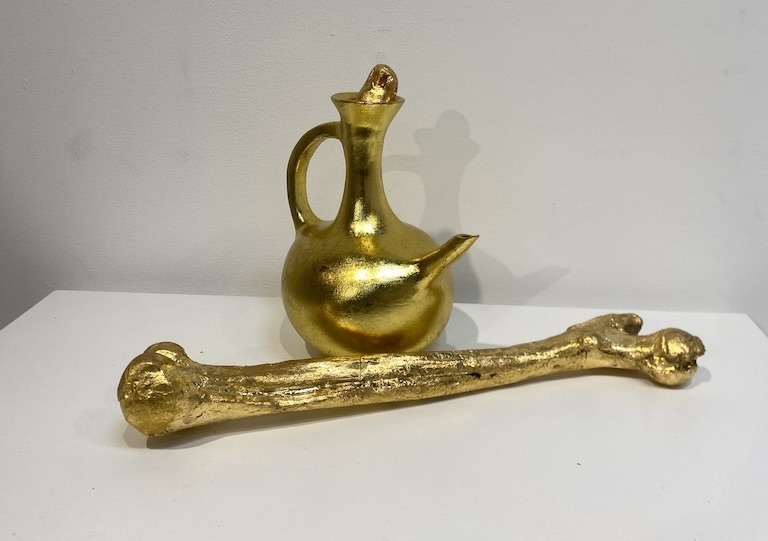On exhibit at Mason Fine Art through November 4, If our skin has no value, then our bones must be gold, an installation by the Ethiopian American artist Abezash (Abezash Tamerat), combines beauty and sheer horror in what must surely be one of the most powerful and harrowing exhibitions about rape and child abuse ever presented in Atlanta.
In a compelling narrative text, the artist tells us that between the ages of 13 and 16, she was raped repeatedly by her biological father and subsequently placed in foster care, where she experienced a different form of abuse and powerlessness.

Her story is told in a combination of her own words and unusually graphic, aesthetically powerful poems written for the exhibition by the Ethiopian American poet Christine Yohannes.
This makes for an unusual amount of wall text, which visitors may find off-putting. However, once they start reading it, it’s difficult to stop.
What initially attracts viewers to the section of the gallery with the blocks of wall text are skin-like hangings suspended mid-gallery and close to the walls.
Simultaneously exquisite and repellent, they bear a variety of stains crafted by the artist from pigments of her own devising. So, too, with the skin-like supports.
The hangings are accompanied by an array of golden objects, including representations of bones. These embody Abezash’s effort to express the value of her vanished sister Yetanayet.
Her sister’s fate remains unknown, although cadaver dogs have detected the odor of decomposition on the property where the family lived.
This observation is not an incidental element. The artist worked with perfumer Chavalia Mwamba to create a reproduction of the scent of death, although the sachets containing it proved too overpowering to be opened in the gallery.
Other parts of the exhibition range from didactic literalism, in an array of rape kits representing the quantity of kits collected but never examined by law enforcement authorities, to bluntly articulated symbolism, in a gavel labeled “Supreme Court.”

This also symbolizes the court that, she tells us, dismissed charges in the case brought on her behalf because of its having been filed in the wrong jurisdiction.
The pamphlet-sized artist statement accompanying the exhibition ends with a section titled “Where Is Justice for a Black Girl in Georgia?”
It concludes with a paragraph that states: “profound sadness envelops me when I realize that my sister’s disappearance isn’t an isolated incident. Black Americans constitute only 13 percent of the population yet account for a staggering 40 percent of missing person cases.”
The visual parts of this exhibition are a stunning addition to a career that has included paintings and a short film.
The overall ensemble, either despite or because of its dizzying assemblage of ways of storytelling, represents a unique contribution to a mode of activism that incorporates, in this instance, a compelling autobiography.
Mark Karelson, the owner of Mason Fine Art who first introduced abezash’s work to the Atlanta art world a decade ago, is right when he remarks, “This is the kind of art that human rights museums should be interested in.” Whether in a museum or other public venue, this painful, powerful show should be seen by a wider audience.
::
Dr. Jerry Cullum’s reviews and essays have appeared in Art Papers magazine, Raw Vision, Art in America, ARTnews, International Review of African American Art and many other popular and scholarly journals. In 2020 he was awarded the Rabkin Prize for his outstanding contribution to arts journalism.

